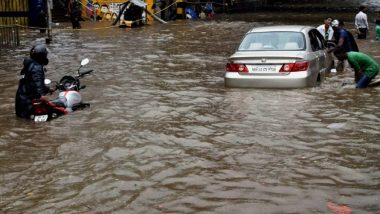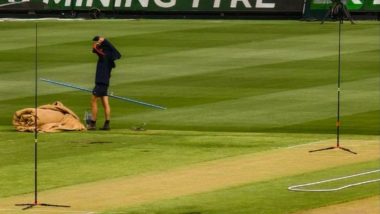Mumbai, June 10: The Brihanmumbai Municipal Corporation (BMC) spends crores of taxpayer money as part of monsoon preparedness. But despite that, every monsoon, the saga of waterlogging remains to be seen same. The civic body this year has hired 310 de-watering pumps at cost of Rs. 54 crore to avoid waterlogging issues. However, the Saturday rains have proved that installing these de-watering waters won't help to resolve the flooding issues.
The pumps have hardly helped, as at many places where they were used, the waterlogging continued even after the rain stopped. Despite unimpressive results, BMC continues to spend crores of rupees on hiring these de-watering pumps every year, eventually wasting taxpayers money.
During Saturday's showers, several parts of Mumbai were flooded. The corporation disaster control room said that waterlogging was reported at around 11 places including Hindmata in Dadar, Dadar TT, Parel TT, Dharavi, Kings Circle and Sion Road no 24 where the water level was up to 1.5 feet. Also, to help people who were stranded in the rain, around 3,000 personnel were been pressed into service. Moreover, even though the rain stopped late evening, the water continued to collect at these places for few hours.
#BREAKING -- Heavy rainfall in Mumbai causes water-logging in several parts of the city. A warning for heavy rainfall has been issued for the next few days. People have been advised to stay indoors. @radhika1705 from ground zero. pic.twitter.com/jtbsWpNUXf
— News18 (@CNNnews18) June 7, 2018
Mumbai experiences waterlogging every year during the monsoons, crippling the pace of the city. Some characteristics make it particularly vulnerable to flooding. Here are five reasons:
Mumbai a concrete jungle: As trees are being cut down to build high rise buildings, Mumbai has become particularly prone to waterlogging. Absorbent surfaces have been covered with tars and asphalt, making natural drainage a problem.
No natural pounds, lakes to drain water: Earlier in Mumbai, there were many lakes, ponds which helped to flush or drain rainwater. however, with time the lakes and ponds are now being reclaimed to build cement roads, buildings and other structures.
No mud path: The mud paths help in soaking water. However, the civic authorities have been concentrating on building more on cement-concrete roads to ensure smoother transport. Therefore, the water which floods the low-lying areas does not get absorbed into the ground.
Uncleaned Nullahs and drains: The nullahs or drains of Mumbai are not well maintained or cleaned. Though BMC spends crores of rupees on nullah cleaning and has started maintenance work before monsoons, the drains continue to be chocked.
Plastic and other non-biodegradable material: Mumbai city is known for its beaches, however, increasing use of plastic and other non-biodegradable materials have worsened the situation. During monsoons, such materials are washed back to the shore during high tide and plug the drains. The 2005 deluge could have been worsened by plastic bags that chocked up the drainage system, according to environmentalists. With the plastic ban in Maharastra, some respite can be seen this year with regards to the flood situation.
The weather forecast has also predicted similar heavy spells of showers for today. The intermittent rain or thundershowers are likely to occur in city and suburbs with heavy falls at a few places for next 24 hours as per IMD.
(The above story first appeared on LatestLY on Jun 10, 2018 01:41 PM IST. For more news and updates on politics, world, sports, entertainment and lifestyle, log on to our website latestly.com).













 Quickly
Quickly




















